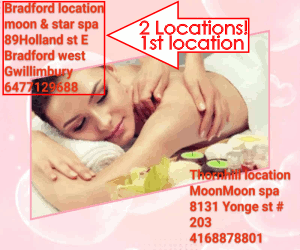
Benefits
Josh Shadle is a Boulder, Colo., massage therapist and avid CrossFitter who says his massage gun is a key part of his own recovery. He uses it every night, “sometimes for hours.” According to Shadle, “it’s just like a mirror of a really good massage therapist.”
Like a traditional massage, the gun aims to reduce inflammation by flushing extracellular fluids such as lymph fluid and venous blood out of the muscle tissue and into the circulatory system. It can help relax tight muscles, break up scar tissue and adhesions, and minimize muscle soreness and tension. A small study published in the Journal of Clinical and Diagnostic Research found percussive therapy to be as effective as massage in preventing DOMS (delayed onset muscle soreness).
Unlike with many other forms of bodywork, it’s not only possible to perform percussive massage on yourself but it’s recommended. According to Alan Novick, physician and chief of the Memorial Rehabilitation Institute in Hollywood, Fla., if someone else is using the gun on you, regardless of their credentials, skill and experience, they can’t tell how much pressure they’re exerting on your body or how much pain you might be experiencing as a result. “You could actually hurt somebody,” he says.
On the other hand, if you’re using it on yourself, “you have that direct feedback loop and you’re not going to apply as much pressure,” Novick says.
Similarly, “if you’re using the gun yourself and you feel electrical feelings, like [from] your funny bone going down to your hand,” Shadle says, “you’re probably not going to continue to do it.”
Massage guns, Shadle says, can be used before a workout to “wake up” the muscles or after a workout to facilitate recovery. They’re also a useful tool for non-athletes. Because they’re easy to use and can reduce tension and increase function, he recommends them for people of all ages, “from the injured athlete to the software developer” who is at a computer all the time.
Too much of a good thing?
When it comes to massage gun usage, more isn’t necessarily better. How much is too much? “If the tissue is getting really red really quickly, [that means] you’ve got a lot of blood flow in there,” Shadle says. At that point, he recommends moving the massage gun to another body part. He also notes that if you keep the massage gun on one spot for too long (in some cases more than a couple of minutes), your skin can become sore and tender and you risk bruising. In general, he advises avoiding holding the gun in a static position for more than a few seconds, and to move it around in a small radius in one area instead.
Precautions
Massage therapists are licensed professionals with specialized training, including the study of human anatomy. To own a massage gun, on the other hand, all you need are a credit card and an Internet connection.
It’s up to consumers to protect their health by taking certain precautions. “You always want to get cleared by your doctor first and foremost,” advises Mike Venezia, a Hermosa Beach, Calif., chiropractor and medical director at Addaday.
No matter what, the massage gun should never cause pain. At best, your muscles won’t relax during a painful massage. According to Venezia, if you’re tensing your muscles to resist the massage, also known as muscle guarding, “it’s like hitting a brick wall, your muscles are rejecting it.” If it’s painful, “stop right away because you’re pressing too hard.” At worst, pain may be a signal that you’re inflicting real harm. If you experience a pins-and-needles sensation or your pain has an electrical quality, you’ve literally touched a nerve — and you should put the gun down.
The massage gun is meant to be used on muscles, rather than nerves, bones, joints or tendons.
While it may seem obvious, experts advise avoiding anywhere you have scabs, wounds, cancerous lesions or a recent bone fracture.
People should also avoid using the massage gun on any body part that has impaired sensation. In particular, this is a concern for those with peripheral neuropathy, a condition often caused by diabetes. Without accurate sensory feedback, you could cause damage without even realizing it. “If you have neuropathy,” explains Novick, “you’re not feeling that you’re potentially hurting yourself.”
According to Shadle and Novick, you should never apply a massage gun to the neck. “You could literally get a carotid dissection,” Novick says. A carotid dissection is a tear in the carotid artery; such a tear can interfere with blood flow to the brain and ultimately cause a stroke. You can, however, safely use a massage gun on your shoulders and/or trapezius muscles to relieve the tension that so often comes from working at a computer.
Also, massage guns and prescription blood thinners such as heparin and warfarin shouldn’t mix. While taking daily aspirin wouldn’t be an issue, Novick says, if you’re fully anticoagulated, and therefore bleed and bruise easily, applying the repetitive pressure of the massage gun to your body “will create a problem.”
Pricing
A quick browse on Amazon turns up a wide range of options, with price tags ranging from $100 to north of $2,000. Why cost varies so much is anyone’s guess. “That’s one of life’s mysteries,” Williams says.
That said, there are certain qualities to consider when making a purchase. Some buyers may want to consider a company’s reputation and the availability of customer support and/or warranties. “Because t[massage guns are] so powerful, I want a company to be behind me if something goes wrong,” says Shadle, explaining why he went with a name brand as opposed to one of the generics.
Also, consider noise level and ergonomics. A loud device may not just be irritating — it can be counterproductive. If your device sounds “like a jackhammer,” Williams says, you’re more likely to tense up, which will rob you of some of the benefits. (Williams also notes that the noise level isn’t always reflected in the price.) But even a silent massager won’t help you if its size, shape and/or weight make it difficult to handle. For people with smaller hands and/or arthritis, these factors are particularly important.
Massage gun makers attempt to differentiate their products by specifying certain millimeters of amplitude, power voltage, pulses per minute and levels of intensity. But the fact is, “there’s not a lot of science,” Novick says. Without controlled studies, there’s no way to know if one product is actually more effective than another. According to Novick, “it finally comes down to what people think.” His advice? Find one with lots of different settings so you can experiment to determine what you like best — and listen to your body.
Pam Moore is a freelance health and fitness writer and speaker in Boulder. Visit her at pam-moore.com




























































































